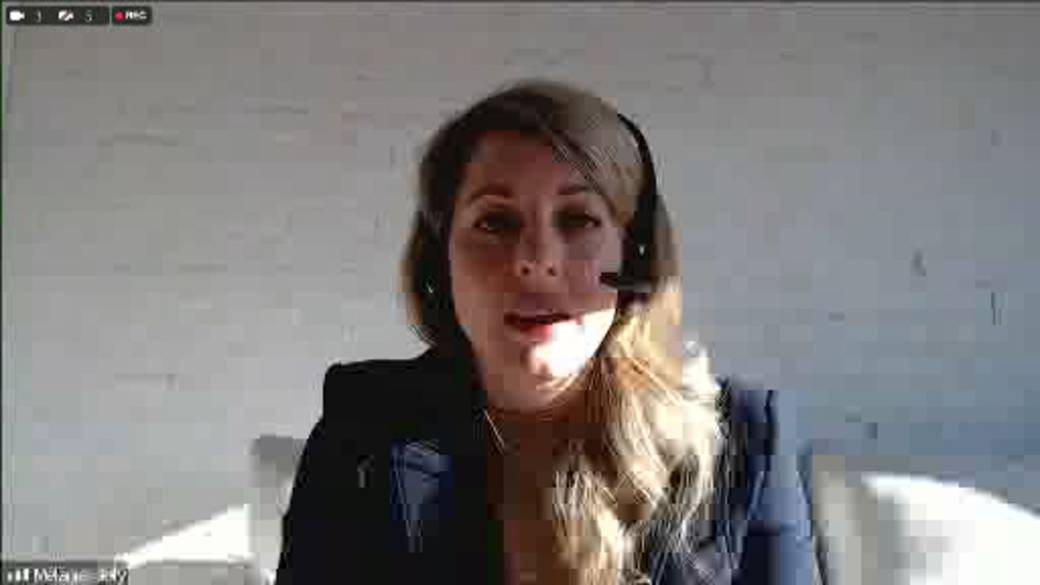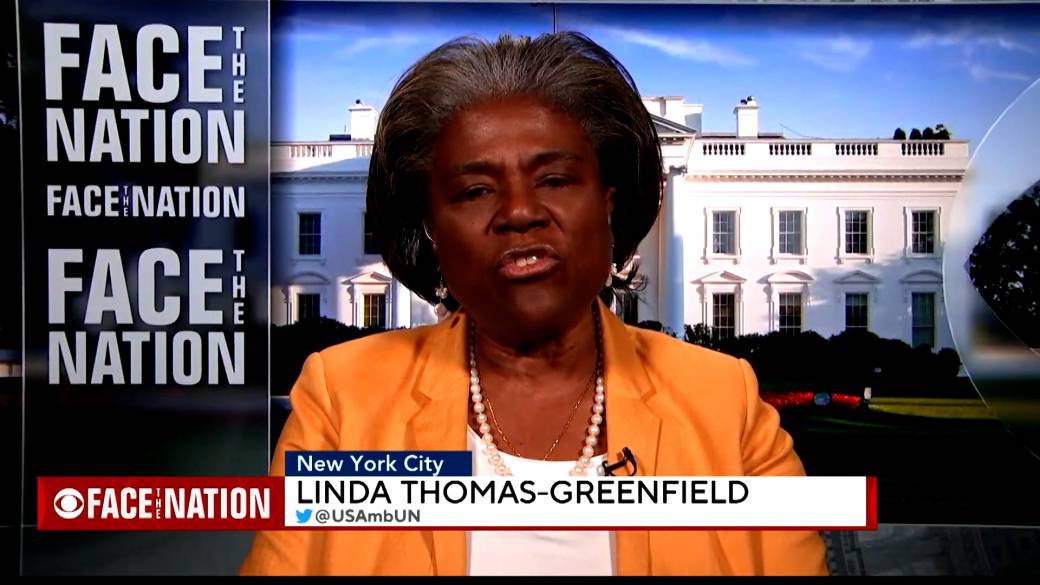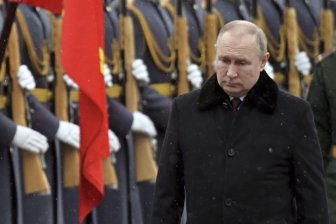Russian President Vladimir Putin’s implicit threat to turn the Ukraine war into a wider nuclear conflict presents President Joe Biden with options rarely contemplated in the atomic age, including raising the alert level of U.S. nuclear forces.
The turn of events is made all the more remarkable by the fact that less than a year ago, Putin and Biden issued a statement at their Geneva summit that seemed more in keeping with the idea that the threat of nuclear war was a relic of the Cold War. “Nuclear war cannot be won and must never be waged,” they agreed.
Read more:
Ukraine says next 24 hours are crucial as Russia attacks from “all directions
On Sunday, Putin told his top defense and military officials to put nuclear forces into a “special combat duty regime,” but it was not immediately clear how that might have changed the status of Russia’s nuclear forces, if at all. Russia, like the United States, keeps its land-based intercontinental ballistic missiles, or ICBMs, at a high state of readiness at all times, and Russia’s submarine-based nuclear missiles, like those of the United States, are believed to be in a similar position.
Putin said he was responding to economic sanctions imposed by the United States and other Western nations in recent days over his invasion of Ukraine, as well as “aggressive statements regarding our country,” which he did not elaborate on.
The Biden administration assessed Putin’s move, which it said unnecessarily escalates an already dangerous conflict. Indeed, Putin’s words amount to the kind of threat rarely heard even during the Cold War period, when the much larger nuclear arsenals of the United States and the former Soviet Union threatened the world with nuclear Armageddon.

HOW DOES THIS CHANGE THE RISK OF NUCLEAR WAR?
U.S. officials, while disturbed by Putin’s words, indicated that they did not know what he intended. But it is so rare for a U.S. or Russian leader to issue an implicit nuclear threat, especially in the current context of the war in Ukraine, that the risk of going nuclear cannot be ruled out. In Russia, as in the United States, the president is the only one with the authority to order a nuclear strike.
The United States and Russia have the two largest nuclear arsenals in the world by far. They include weapons that can be delivered by aircraft, submarines and land-based ballistic missiles. The only time in history that nuclear weapons have been used in combat was when the United States twice bombed Japan in August 1945, and at that time, the United States had a world monopoly on nuclear weapons. The Soviet Union successfully tested its first bomb in 1949.
Daryl Kimball, executive director of the Arms Control Association, said Putin’s order to put his nuclear forces on high alert was regrettable, but not a complete surprise, given his previous implied threats against any nation that tried to stop him in Ukraine.
“Inserting nuclear weapons into the Ukrainian war equation at this time is extremely dangerous, and the United States, President Biden and NATO should exercise extreme restraint” and not respond in kind, Kimball said. “This is a very dangerous moment in this crisis, and we need to urge our leaders to step back from the nuclear brink.”
Read more:
Large crowd gathers in downtown Toronto for ‘mega-march’ in solidarity with Ukraine
WHAT DOES IT MEAN TO PUT NUCLEAR WEAPONS ON ALERT?
According to U.S. nuclear doctrine, the alert level of weapons is critical to their role in deterring attack. The idea is that being prepared to respond on short notice makes it less likely that an enemy will strike first and risk retaliation that would cause incalculable damage.
A counterargument is that having ICBMs, which the Pentagon calls the most sensitive part of its nuclear arsenal, on high alert during a crisis compresses the president’s decision-making leeway and leaves open the possibility of ordering their launch in response to a false alarm. The 400 deployed U.S. ICBMs are armed at all times.
Some arms control experts have advocated that ICBMs be taken off high alert by separating the missiles from their warheads. But in a crisis, perhaps like the one implied by Putin’s warning order on Sunday, the decision to rearm the missiles would be taken as an escalation move that could worsen the crisis.
During the Cold War, U.S. and Russian weapons were not only more numerous, but also more prepared. In 1991, President George H.W. Bush took the historic step of ordering the withdrawal of nuclear-capable strategic bombers as part of a broader move to reverse the nuclear arms race. The bombers have remained off alert ever since.

HOW HAS THE U.S. RESPONDED TO PUTIN SO FAR?
There is no evidence that the Biden administration has responded in any sense to Putin’s announcement that he was ordering his nuclear forces into a “special combat service regime,” perhaps in part because it was unclear what that means in practical terms.
There is also no word from Washington that Putin has taken worrisome steps such as loading nuclear weapons into all or part of Russia’s nuclear-capable air fleet or sending more ballistic missile submarines to sea.
In addition to his strategic nuclear force, Putin has at least a couple thousand so-called non-strategic nuclear weapons, such as shorter-range ballistic and cruise missiles. They are called non-strategic because they cannot reach U.S. territory. But that is little consolation for the countries of Europe that are within range of those weapons. The U.S. has some 200 non-strategic weapons in Europe; they are bombs that would be dropped by aircraft based in Europe.
For years, some U.S. officials have worried that Putin, if faced with the prospect of losing a war in Europe, might resort to the use of non-strategic nuclear weapons, thinking that would quickly end the conflict on his terms.
2022 The Canadian Press
Reference-globalnews.ca

